This essay was originally posted to Twitter as a thread on July 15, 2022, republished here with slight revisions and additional content. It is the second post in my series about Dehang Village and the Miao ethnic minority. You can read the first post here.
The video at the top of this essay was taken at an open-air kitchen and restaurant near the exit of the performance hall in Dehang Village. This restaurant has the best location in town - as soon as the show ends, it's lunchtime and the boss lady is waiting to aggressively scoop them up. I saw that she has a partnership with some of the tour group operators, who bring their guests directly to dine at her restaurant after the performances.
The boss lady here is a real hustler. When she’s not cooking, she’s standing outside on the path, strategically located between the performance hall and the exit, snagging people to come into to eat. She and her husband also team up to do a drum performance as part of the dining experience…lunch and a show!
She spotted up walking by the evening before and (correctly) guessed that younger people would be more likely to be browsing online reviews. “Hey…! Hey! Have you eaten dinner yet? Oh, you ate already? Ok no problem, come back here tomorrow for lunch. Our food is very good. Check online! You can see, Baidu…Dianping, our food is delicious! I’ll give you a 15% discount when you come tomorrow!”
Sure enough, she’s pretty much the only restaurant in the village listed on Dazhong Dianping (a restaurant review app). So we came back the next day for lunch.
But before I talk about this restaurant, though, let me say something that might catch me some flak: In general, I do not think rural Chinese countryside food is very good.
Boom, I said it. To be totally frank, it's usually over- or under-seasoned, ingredients are limited, the execution is sloppy, and there's way too much fried stuff. The people serving the food are unlikely to be trained chefs or have any background in professional culinary preparations…they’re regular people who opened guesthouses and restaurants to try to make some money off of tourists. So of course, the standard of cooking will be lower. It’s not BAD of course. But by Chinese standards? Compared to a trained chef, with access to a full range of ingredients, styles, and preparations from thousands of years of accumulated culinary wisdom? No shot. At its best, it's simple food with fresh ingredients and rural vibes.
BUT. There is ONE thing, however, that I always seek out when I go to the Chinese countryside. There's ONE thing that they make much better here than anything you can buy in the grocery stores in the city. That one thing is Chinese countryside cured meat (腊肉) and it is something I really look forward to when I travel to rural areas.
In the picture above, the ducks, sausages, and hams are curing directly over the wok, so every time she cooks, she adds a layer of wok smoke to the hanging meat. The oldest, funkiest pieces of meat get fully black with a white mold on the rind, like a dry-aged steak. The boss lady told me those aren’t for tourists; only locals with very strong tastes would eat those.
At a different restaurant, we saw cured pig heads too.
Now fair warning here: Miao aunties are NOT adding a pinch of nitrites to their homemade cured ham, the way commercial cured meats are usually made. It's just salt and spices. This is important because nitrites kill nasty bacteria like the one that causes botulism. If it’s authentic countryside cured meat, there are certain food safety risks that you have to be aware of. Nitrites also help stop the growth of mold, which many Chinese internet users have discovered after they buy these cured meats and return home.
But. On the other hand. Sodium nitrite is hardly the nicest stuff in the world. In fact, it has been linked to a heightened risk of colon cancer and limited/banned in some countries.
Some people (like me) are sensitive to it and get wicked headaches if we eat a bit too much of the stuff. Seems like we’re damned if we do, damned if we don't.
Well, if I get to make my own choice, I choose mold.
Let’s get back to hustler boss-lady’s restaurant. I ordered a dish with her specialty cured pork, stir-fried together with dried bamboo shoots. But after one bite, I was disappointed to discover I wasn't eating her homemade cured product hanging over the wok. She was definitely serving me a commercial product.
As always, I am unwilling to waste food, so I ate the whole dish, despite its suspiciously uniform slices, extremely saltiness, and off-putting chemical taste.
But later that night I developed a ripping headache, so bad I could do nothing but take Ibuprofen and lay down to sleep at 8:30PM. For me, that was case closed on the question of whether it was homemade or commercial product; I’d only have that kind of reaction to eating a lot of something loaded up with nitrites.
The commercially-produced ham brought in from outside to be served to tourists is emblematic of the disneyfied “village experience” I touched on in my first post about Dehang Village. Along the path towards economic rejuvenation, aspects of cultural authenticity are bound to be lost, and it’s simply impossible for one household with a thriving business to produce enough homemade cured ham to meet the demand of dozens of hungry tourists each day. I don't blame her for serving commercial product to tourists though - I blame myself for not recognizing and avoiding a tourist trap. Although, to her credit, she did indeed give us a 15% discount on the meal, just like she promised the day before (not that it was expensive…the whole meal cost like 90 RMB). And the rest of the food tasted fine.
By contrast, here's the ham dish we get the next day at a different restaurant in the village called Auntie Yang’s. Auntie Yang’s is located halfway up the village, near the entrance to the canyon, and gets a lot less foot traffic.
I'm certain this is her own homemade product. The pieces are jagged, irregular, and taste only of fat, smoke, salt, and botulism. They are goddamn perfection. Thanks Auntie Yang. You saved my dining experience in Dehang.
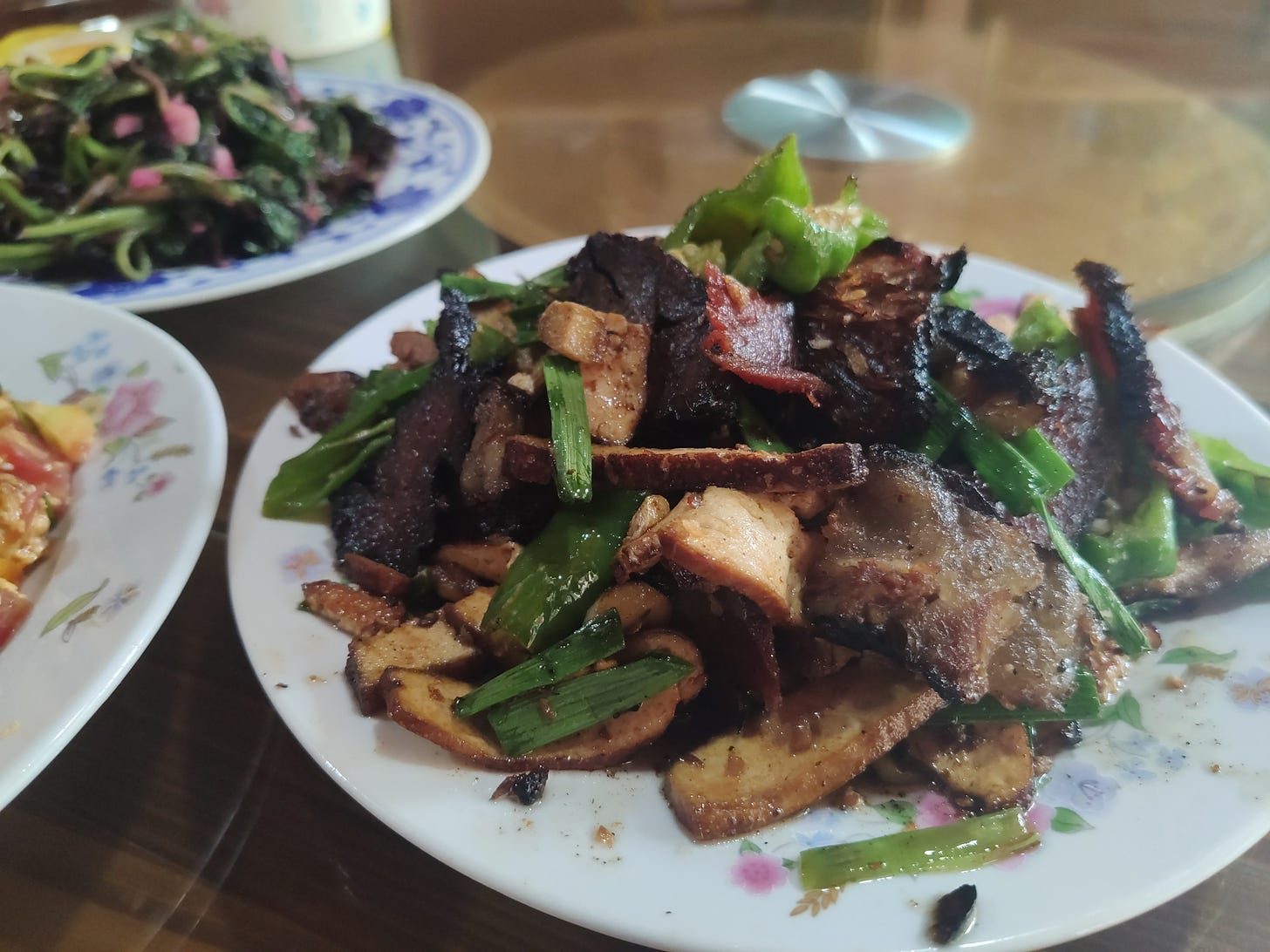
Auntie Yang isn't from Dehang; she moved here to the village when she married. If you're from Dehang, your surname should be Shi 石, as is true for almost everyone in the village. Miao avoid marrying someone with same name, so they have to find spouses in different villages.1
Auntie Yang, like Auntie Shi, says I'm paying too much for my guesthouse. Check out Auntie Yang in her remarkably modern and well-equipped guesthouse kitchen. Nice example of the typical loose Miao pants with the embroidery around the ankle too.
I tell her I would have loved to book her guesthouse, but she has only ONE review on Ctrip, so we didn’t even notice her listing, nor would we have booked a place that only has one prior review anyway. She said she doesn’t really understand how to use Ctrip; her son up the listing for her. Usually, guests will call her phone directly to make a booking.
We explain to her that if she only accepts booking through phone calls, she’ll never be able to build a strong Ctrip review history. She could encourage those guests that call her directly to book online, and them give them a price-matching deal as long as they promise to leave her a review after they check out, which will help her compete against the other guesthouses. We have some background doing Airbnb homestays, so we trade tips for guest management, and farming good reviews for hotel booking websites. She finds this information all very illuminating. It’s the least we could do. For the ham.
After I enjoyed the ham at Auntie Yang's so much, I am now even more sure that the first restaurant gave me store-bought ham. I try to make some gossip later that day by tattling to my buddy Auntie Shi. "Do you know they're using store-bought ham over there at that restaurant?" I ask, like a snitchy shit-stirrer.
Auntie Shi of course, is a grown adult, so she doesn't take the bait to indulge in gossip. "Well, she needs her own ham for her family. Her business is good, so I guess she has to buy meat from outside for her guests. I've never tried it though. I don't like to eat too much meat".
Fair enough.
Auntie Shi tells me most Miao families raise 1-3 pigs each year in pens under their stilted homes. When one is slaughtered, you get a brief window of time, about 1-2 weeks, where you can eat fresh pork, and then the rest will be turned into the ham we're eating now. The cured meat tradition from all over rural China naturally stems from a historical lack of refrigeration and the need to preserve meat, which they maintain today. So, if you get a dish with fresh pork on demand, like in the video on the top of the post, it's probably brought in from outside.
There is one other dish that you can make shortly after you slaughter a pig: Miao sour pork. As far as I can tell from searching online, this dish is unique to the Miao, and is MOST famous here in Xiangxi. To prepare it, you cover fresh pork with cornmeal, ferment it for 15 days, then fry. It has a mild, tingly sourness that contrasts nicely with the fatty richness. I would have preferred some meatier pieces though; these were really fatty.
Auntie Shi says it’s common in the village to slaughter your last pig at Chinese New Year, then in the spring, go into town and buy piglets to raise for the year. She doesn't eat much meat herself, but she's good at choosing healthy piglets. Her husband is bad at it, so she doesn't let him choose.
She thinks their local pork tastes better the pork from outside because the pigs eat mostly natural stuff like vegetables, table scraps, and farming trimmings. She's heard the pigs raised in the city eat mostly cornmeal, so their fat is the wrong color and their meat isn't as good.
I'm sure she's right.
That’s it’s for my commentary on Dehang Village’s food. It's always a nice change of pace to come out to the countryside and have a little refresh of your diet for a few days. Sure, you need to watch out for tourist traps, like anywhere in the country (or even in the world) but the good stuff will be apparent if you know what you’re looking for. Maybe country food won't blow you away; you're more there for fresh ingredients and vibes. And, if you ask the right questions, you can get an education too.
After this post on Twitter, I wrote about a wonderful hike I did in Dehang Canyon before leaving the area for my next destination. Check it out here:


Amusingly, I noticed a “informational” sign about Miao culture on one of the hiking trails that said the exact opposite - that Miao only intermarry with the same surname. Something got lost in translation I guess.


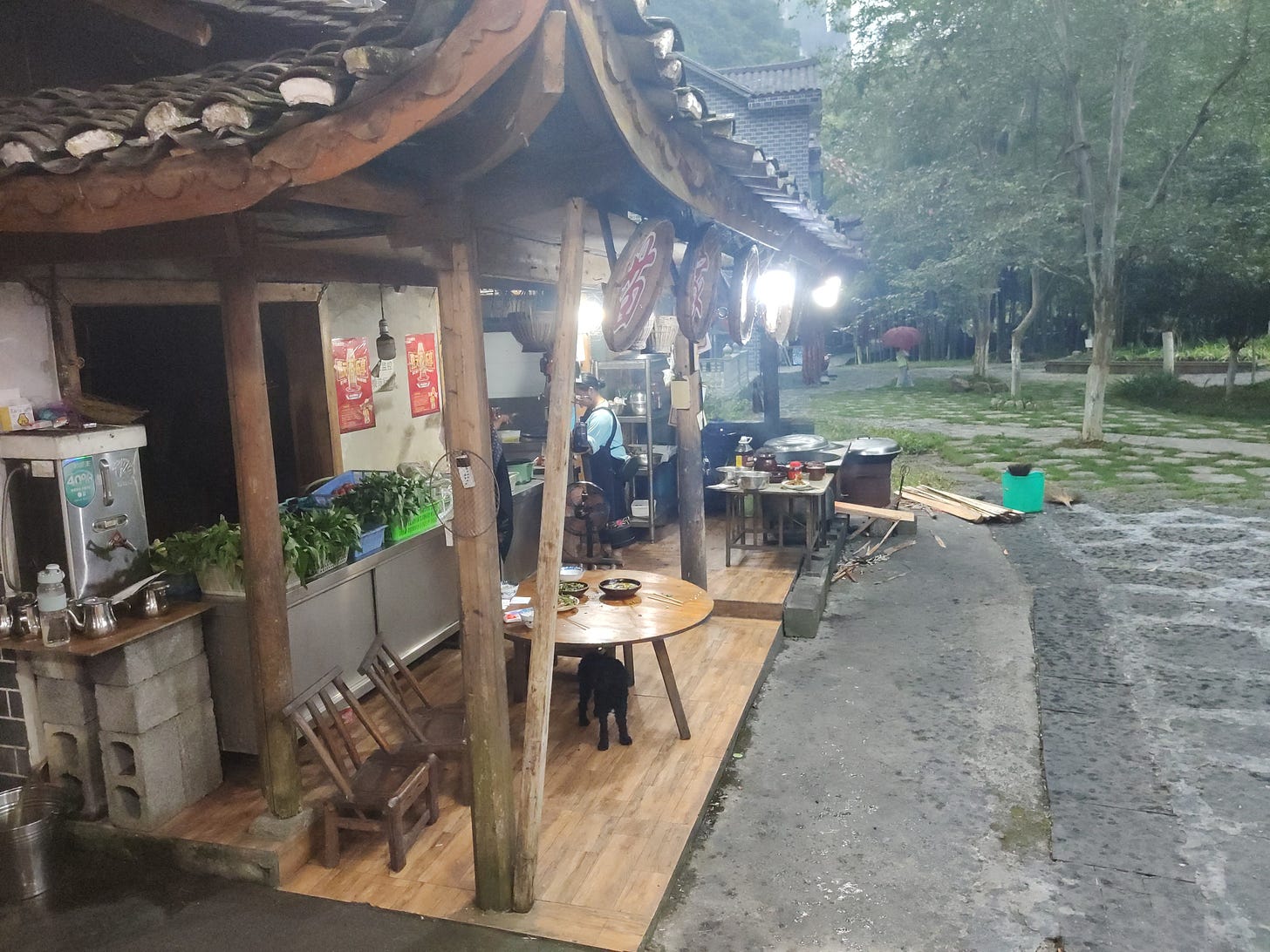
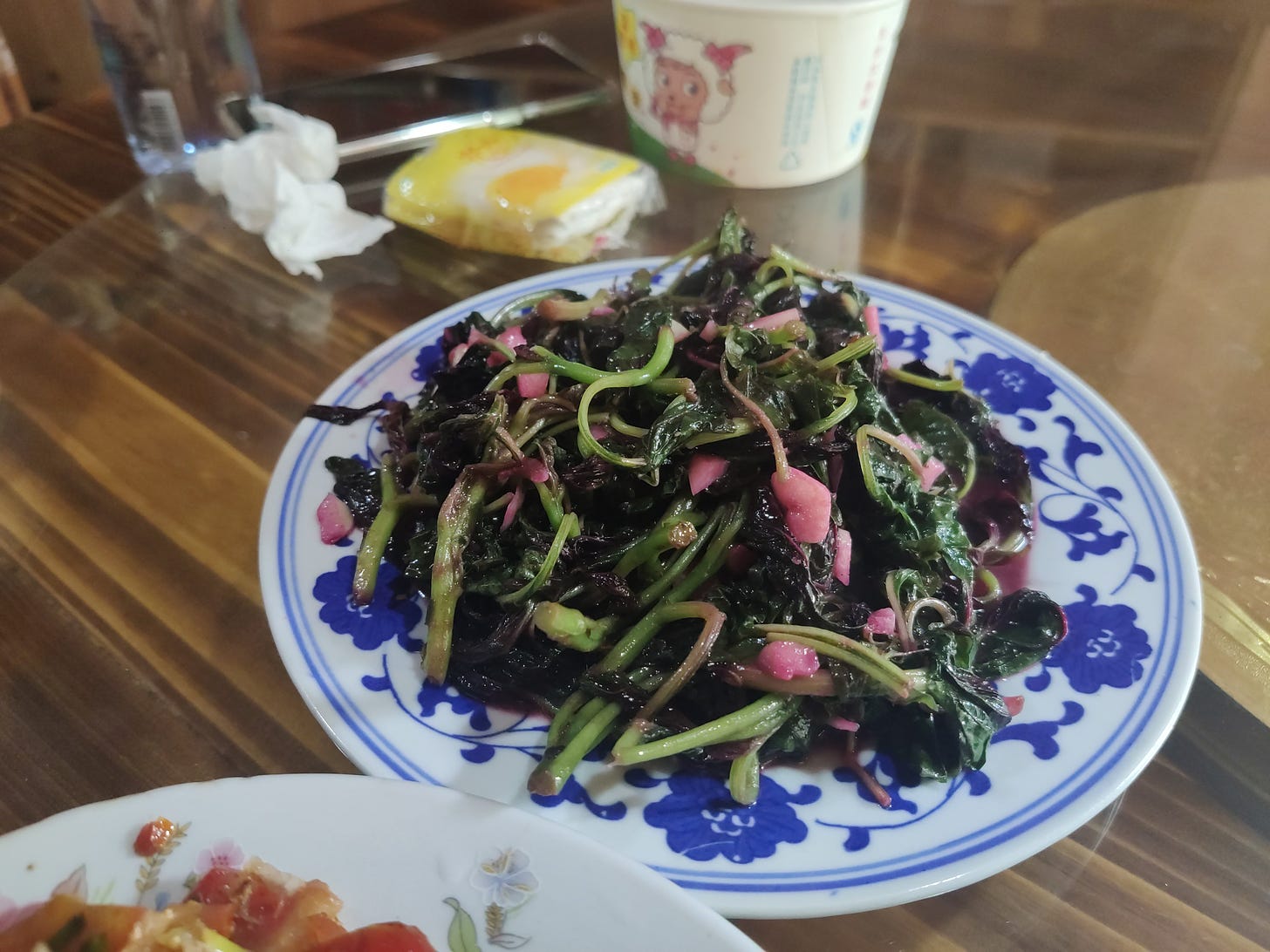
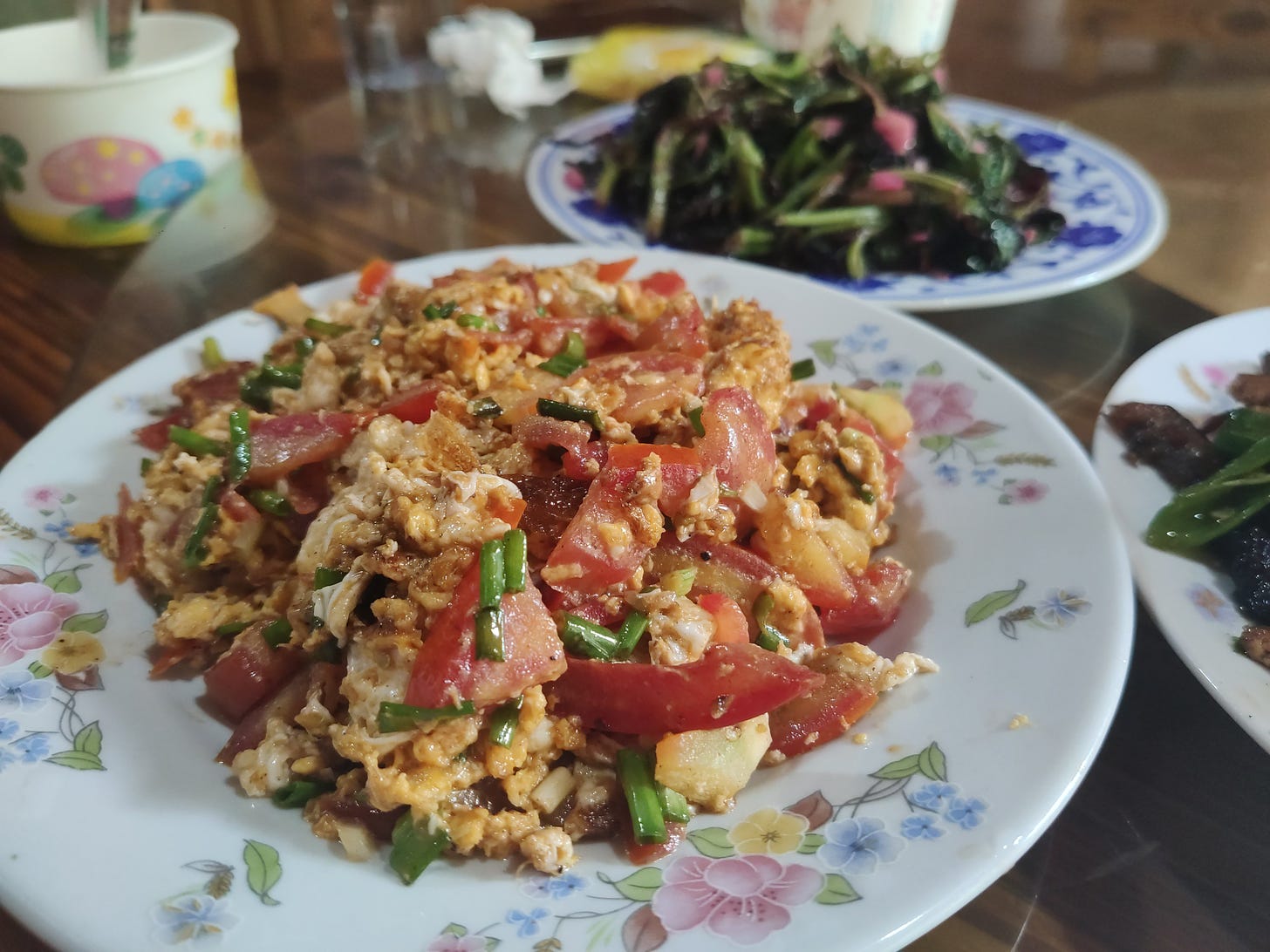
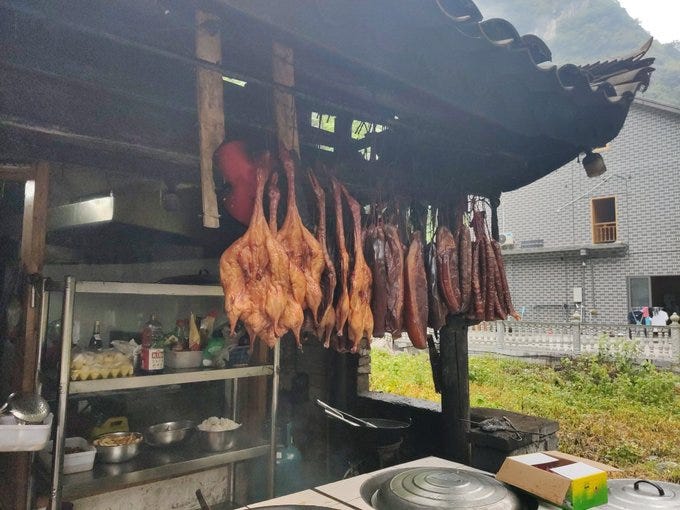
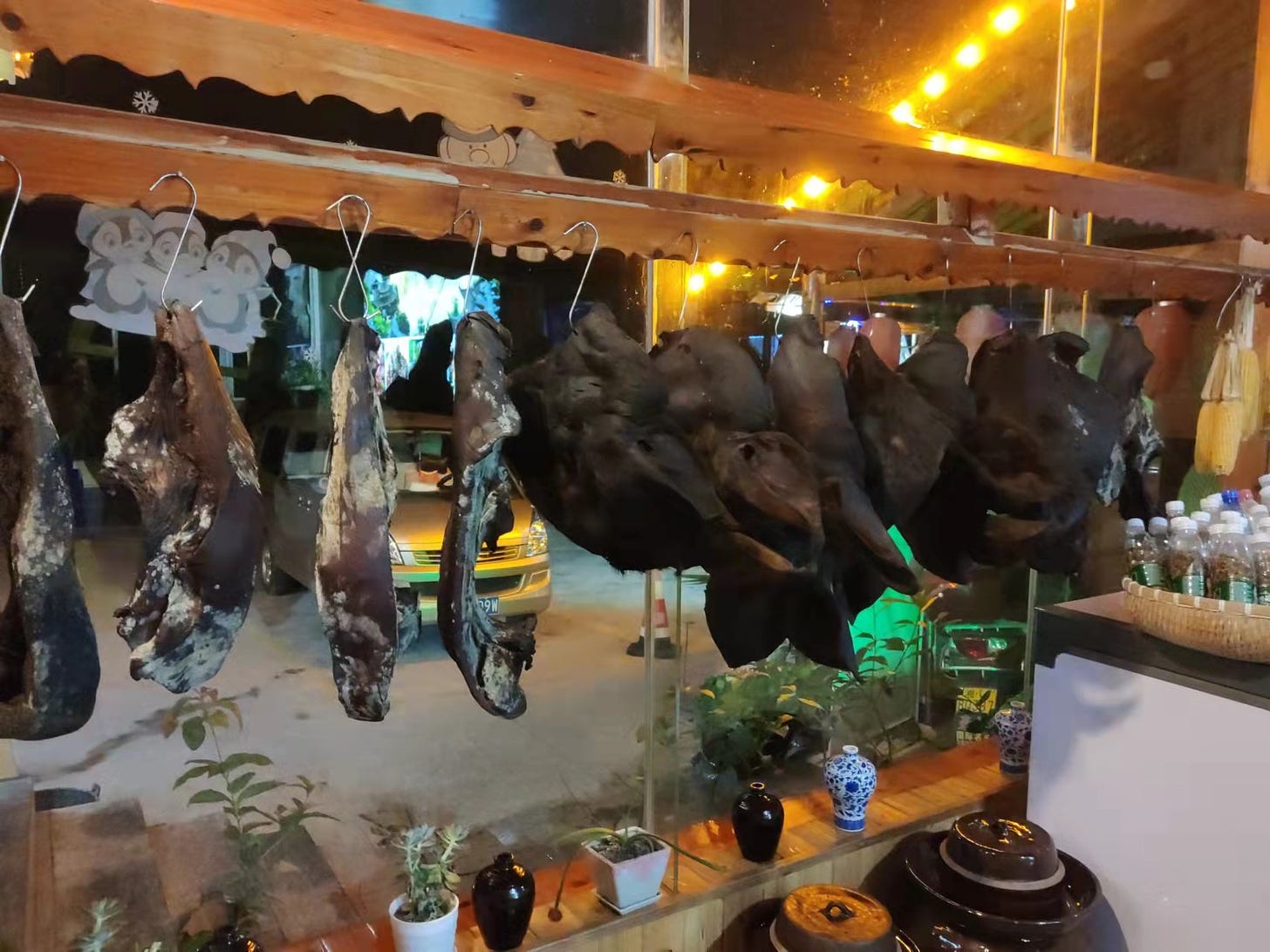

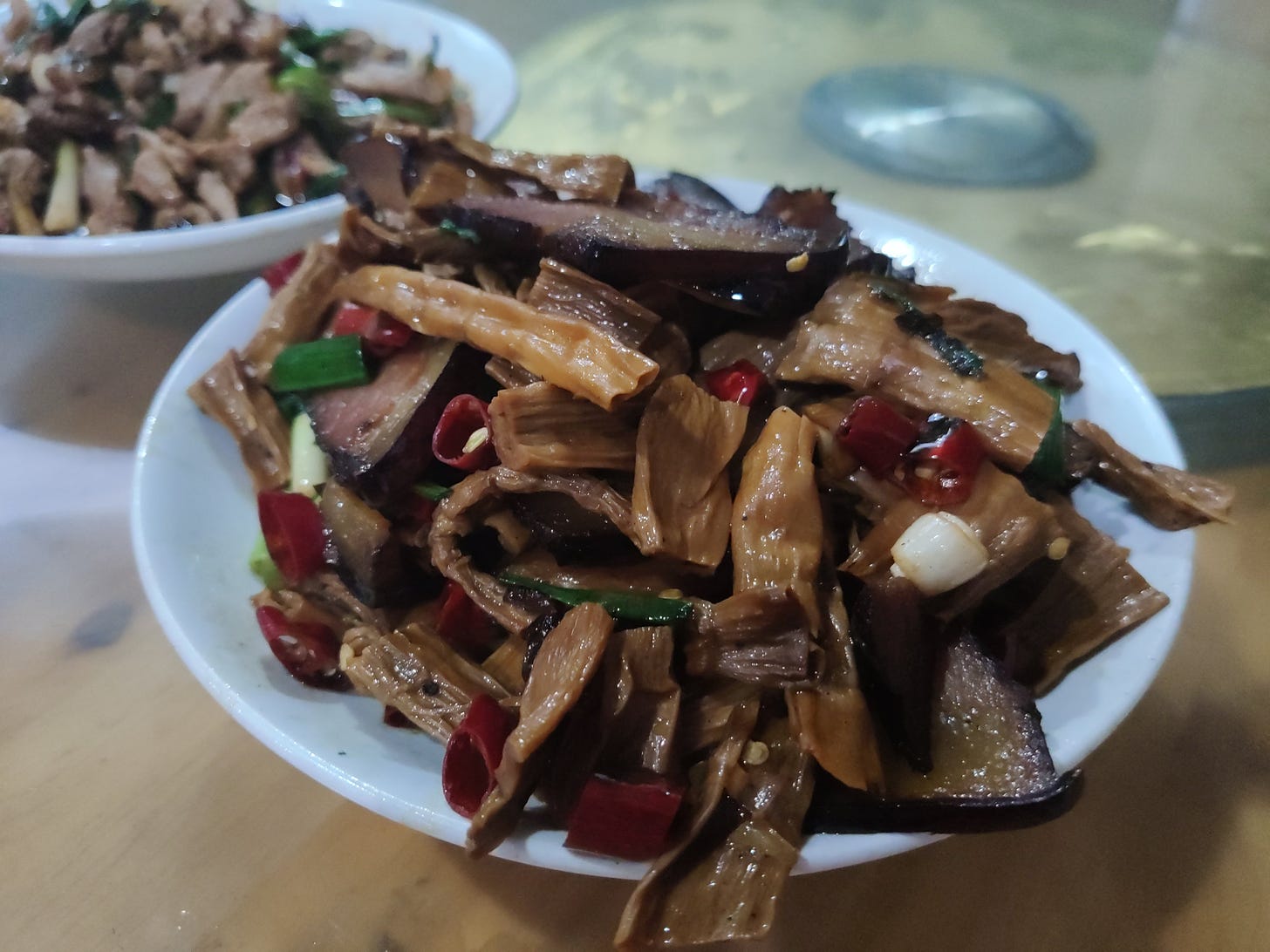
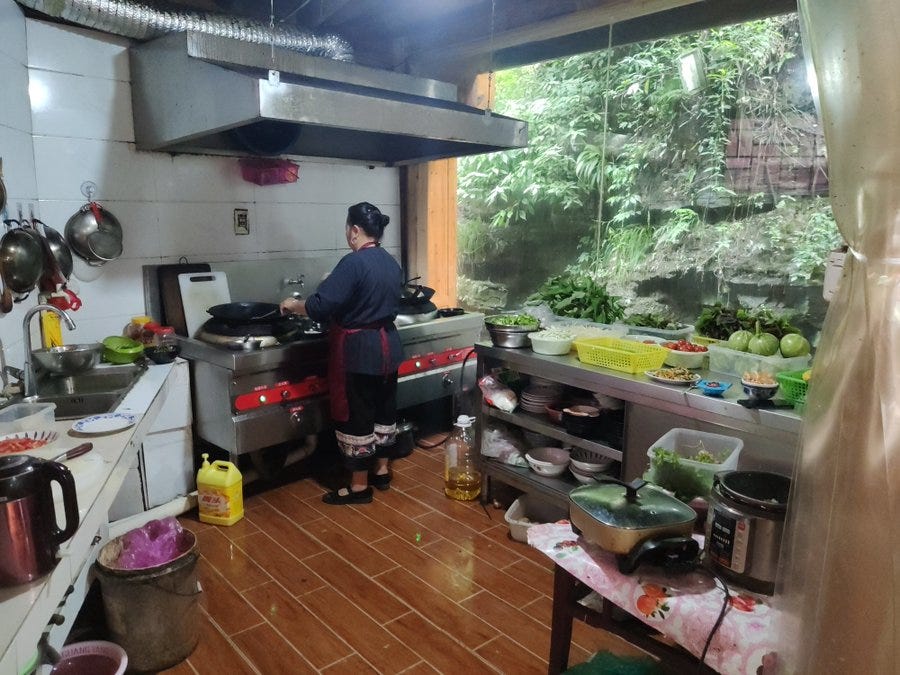
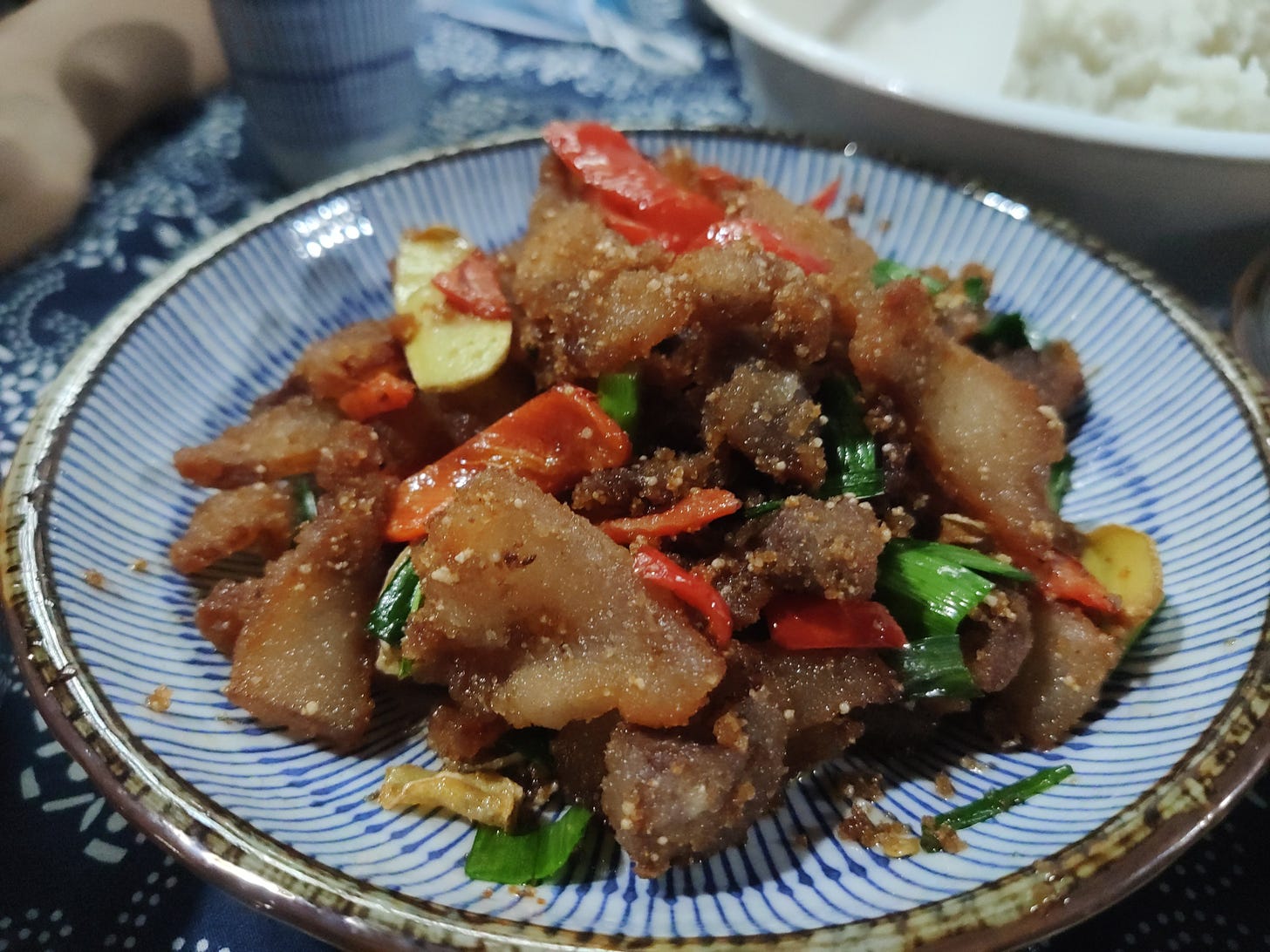

In Search of Dehang's Best Ham